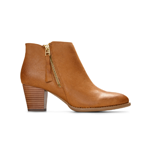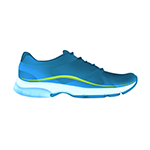
Let Your Fitness Routine Change with The Seasons for Ultimate Benefits
By Juliet Kaska
The human body is incredibly adaptable, both physically and mentally. This is a wonderful thing for our evolutionary survival. When it comes to our modern-day fitness goals, however, this attribute can be detrimental to our success. Once our body has adapted to a workout routine, we’ll no longer see improvements by continuing that same routine. This is true whether our goal is health, strength, endurance, weight loss, tone, or even the positive mental effects of exercise. A routine left unchanged will result in a plateau. Or worse, you may start going backward if you get burned out or bored with the routine. This is why fitness experts and coaches recommend changing routines every 6-12 weeks.
I find the change of the season is a great time to transition workouts. There are additional benefits to our overall health and wellbeing of changing with the seasons. Our natural state, before modern advances and technology, naturally followed rhythms; circadian rhythm, seasonal/weather rhythms, biological rhythms and even following the migration of animals for food. The closer we can return to these rhythms (and no, I am not suggesting you follow the geese migration in order to eat!), the more our hormones self-regulate, we sleep better, and overall we experience a calmer state of being, because our nervous system isn’t in overdrive.
In all the seasons it is better to get outdoors than stay locked inside from sunrise to sunset. That even goes for you city dwellers. Get out into the concrete jungle! Being outdoors helps keep us attuned to our circadian rhythm, as well as giving us the benefits of vitamin D, fresh air, and nature. Each season has characteristics that also play a part in how, what and when to workout. Below I have outlined each season and options to consider in what and when you choose to workout. Take time in the preceding season to make a plan for the upcoming season changes.
Winter:
Seasonal Characteristics:
Cold, dark/least amount of natural light, dryness, lethargy
Best Time to Work Out:
Outdoor workouts: At high-sun, to keep your vitamin D reserves up.
Indoor workouts: First thing in the morning, between 6:00-10:00am
Type of Workout:
Outside Workouts: Hill walking & hiking, HITT, interval training
Inside Workouts: Heated group classes, cycling classes, treadmill walking/running/sprints
Wardrobe Updates:
Clothing: To keep you dry, warm, to protect you from wet and windy conditions and to protect your head, hands and feet.
Sneakers: Waterproof sneakers
Water:
Drink warm water first thing in the morning and before every meal in addition to your normal water intake. Stay away from all iced beverages.
Tip:
Signup for a fitness program or hire a trainer that kicks off the first week of January. This will help to motivate you through the holiday period.
Spring:
Seasonal Characteristics:
Wet, change, growth, newness, wet, heightened allergies
Best Time to Work Out:
Outdoor workouts: Late afternoon and early evening, 3:00pm-6:00pm
Indoor workouts: Late afternoon and early evening, 3:00pm-6:00pm
Type of Workout:
Outside Workouts: Hiking, Hatha Yoga, biking, stretching, boxing
Inside Workouts: Weight training, Hatha Yoga, Pilates, stretching, boxing
Wardrobe Updates:
Clothing: Layers are still key in the spring, they just don’t need to be as focused on keeping heat in as in the winter. Keep a top layer that is waterproof or water resistant for surprise spring showers.
Sneakers: Water-resistant sneakers from the winter are still needed in the rainy spring months, but this is a good time to invest in a new pair. After all, spring is the season of ‘new’ and a fresh pop of color could be refreshing! This won’t necessarily affect your workout , but it will most likely make you smile☺
Water:
Start your day with a cleansing warm water tonic of lemon, cayenne and honey. Drink room temp waters and herbal teas throughout the day.
Tip:
Pollen levels are heightened in the spring, therefore change your clothing, and shower & wash your hair as soon as you get home from. This will help to mitigate the spread of the pollen to other surfaces which you and your family will inhale.
Summer:
Seasonal Characteristics:
Hot, dry, fiery, light/longest amount of natural light, heat exhaustion
Best Time to Work Out:
Outdoor workouts: None, or early in the morning before the sun is up.
Indoor workouts: Early mornings
Type of Workout:
Outside Workouts: Water activities and sports, longer walks at sunrise and/pr sunset
Inside Workouts: Nothing with excess heat. Strength training, Pilates, Yoga
Wardrobe Updates:
Clothing: Light weight, breathable, fabrics with UV protection. Wear sunblock even on areas under clothing
Sneakers: With a breathable fabric, like the Miles Active Sneaker, so excessive heat doesn’t get trapped
Water:
Increase water consumption. Resist the urge to ice water, cool in fridge if necessary
Tip:
Familiarize yourself with the signs of overheating, dehydration and heat stroke.
Fall:
Seasonal Characteristics:
Dry, cool, windy, rough, and erratic, insomnia
Best Time to Work Out:
Outdoor workouts: Anytime between late morning and early evening
Indoor workouts: Anytime from early morning to early evening
Type of Workout:
Outside Workouts: Walking & jogging for endurance, biking, body weight training in the park/yard, Yin yoga, Iyengar Yoga
Inside Workouts: Circuit strength training, dance class, strength training class, Yin yoga, Iyengar Yoga
Wardrobe Updates:
Clothing: Consider layering if needed. Depending on where you are located, water resistant or waterproof materials are important.
Sneakers: Check your sneaker to make sure they have enough grip in their sole. Sneakers tend to get used more in the 2 proceeding months of spring and summer, leading to worn down soles.
Water:
Drink extra water. Drink warm water first thing in the morning and before every meal in addition to your normal water intake. Stay away from all iced beverages.
Tip:
Buddy up- when the seasonal characteristic of “lethargy” kicks in your buddy will help motivate you out the door.
Let Your Body Benefit!
Conditions can play a big role in how your body responds to exercise. The manner in which you cool down, hydrate, and dress will change. Hopefully these help to inspire you to think about your workouts more deeply and set you up to be the best version of yourself!
About the Author:
Juliet Kaska is one of the country’s leading celebrity trainers and health + wellness experts. In 2005, she opened Emerson Hall Fitness (EHF) in West Hollywood, CA, which quickly became the most sought-after boutique gym in the Los Angeles area. She then launched her brand JK Zen Fitness, with partnership locations throughout LA, and in 2010 opened the JK Fitness Pilates Studio. Juliet recently partnered with Vionic to create the Move for You program, a three-part series of 7 minute videos that get you moving with power and comfort. In addition to her celebrity clientele, Juliet is known for creating Hollywood’s favorite workout programs: The Bombshell Bride, Picture Perfect, The Red Carpet Workout, The Executive’s Workout and her most popular, Pilates Burn, a high-intensity workout combining Pilates reformer equipment, traditional strength training techniques and the flow of yoga. Juliet has consulted for and appeared on numerous programs such as Good Morning America, Dr. Phil and Entertainment Tonight. Numerous publications including Vogue, Shape, Los Angeles Magazine, People, Oxygen, Fitness Magazine, Glamour and Health Magazine have also featured her as a fitness expert. Juliet is trained and certified in multiple disciplines, making her workout programs both diverse and innovative. She is certified as a Second Generation Master Pilates Teacher and has received dual certification as a personal trainer from the American Council on Exercise and the National Academy of Sports Medicine. In addition, yoga guru Dharma Mittra trained her as a yoga teacher. Juliet brings a vibrant voice and unique perspective to the Vionic Innovation Lab.









